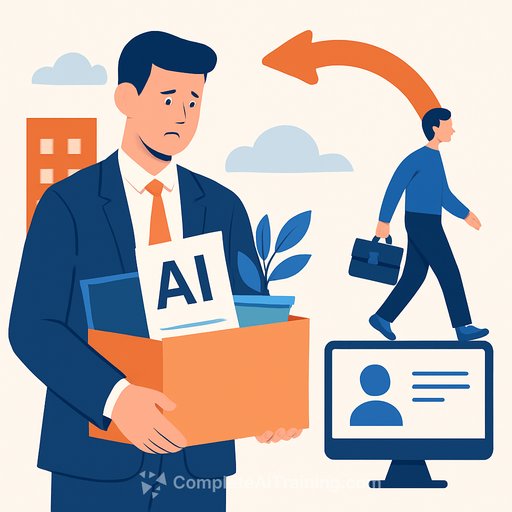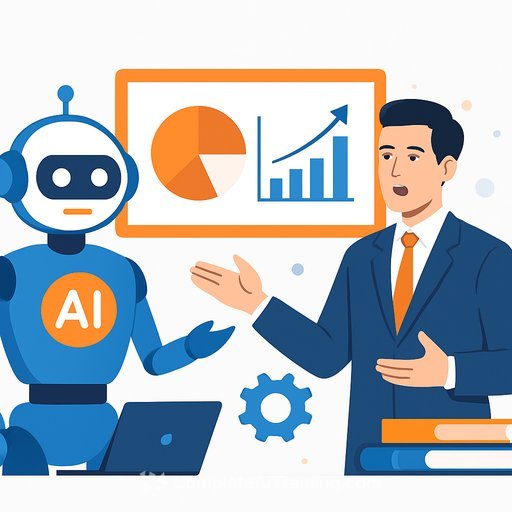The AI Layoff Hangover: Why HR Is Rehiring-and What to Do Next
Last year, many leaders said the quiet part out loud: "AI will take your job." Then they cut headcount and promised investors a cleaner cost structure. A year later, the phones are ringing again. Former employees are getting called back-one by one-because AI couldn't carry the load.
For HR, this isn't a tech story. It's a workforce design lesson. And the data backs it up.
What the numbers actually say
Visier, tracking 2.4 million employees across 142 companies, found that 5.3% of laid-off staff were rehired by their former employers. That rate had been steady for years and has jumped in the last two. Translation: the "AI replaces humans" pitch isn't holding up in operations.
Another reality check: a recent MIT survey reports roughly 95% of enterprises haven't seen quantifiable financial returns from AI investments. Capital spend up, productivity flat. That gap is showing up on HR's desk as backfills, rehires, and remediation work.
Even classic cost-cutting doesn't look great. Orgvue estimates that for every $1 saved in salary, companies spend about $1.27 on severance, unemployment, re-recruitment, and training. Layoffs aren't free. They're a deferred invoice.
Source: TechSpot coverage of the rehiring trend
AI replaces tasks, not roles
AI works well for chunks of work-Q&A routing, data entry, first drafts of reports. It stumbles on end-to-end ownership, judgment, and cross-team coordination. Most jobs are a bundle of tasks, many of which don't compress neatly into automation.
There's also the hidden stack: servers, data pipelines, security reviews, model monitoring, privacy and compliance controls. That's not "connect a model and go." It's months of plumbing, guardrails, and tuning-often handled by people the company just let go.
Why companies are calling people back
- Quality gaps: AI-generated content and ticket triage error rates are higher than expected. Customer experience takes the hit.
- Integration debt: New AI tools don't fit the old process. Shadow work piles up to make outputs usable.
- Underbudgeted rollout: Costs for infra, compliance, and change management exceed savings from headcount cuts.
- Loss of institutional knowledge: The people who knew the edge cases are gone-until they're rehired to stabilize the system.
HR playbook: build for AI + humans, not AI vs. humans
Here's a simple sequence HR can run to stop the whiplash and make AI pay.
- Map tasks, not roles: Break each role into its task inventory. Flag tasks by automation potential (high/medium/low) and by risk (quality, compliance, customer impact).
- Redesign roles around "human-in-the-loop" work: Create roles that pair judgment with AI output review, escalation, and exception handling. Write this into job descriptions and performance goals.
- Set gating criteria before any layoffs: No reductions unless the new workflow hits target accuracy, latency, and cost for 4-6 consecutive weeks in pilot.
- Stand up a QA layer: Define sampling rates, error thresholds, and rework SLAs. Measure false positives/negatives, not just volume handled.
- Budget for total cost of ownership: Include infra, data engineering, security audits, model monitoring, and training. If TCO exceeds projected savings, pause the rollout.
- Keep a boomerang bench: Maintain a pool of alumni with reopen rights, pre-cleared backgrounds, and fast-track offers. It cuts time-to-fill when AI falls short.
- Protect critical knowledge: Require playbooks, SOPs, and decision trees before any team changes. Tie completion to manager goals.
- Upskill for AI oversight: Train staff on prompt quality, tool limits, bias checks, and escalation. Incentivize "quality per hour," not just "tickets closed."
- Tighten vendor contracts: Add clauses for uptime, model drift monitoring, data boundaries, and exit terms. Push for actionable logs, not black boxes.
- Audit quarterly: Compare projected vs. actual ROI. If error rates or rework climb, rebalance the mix of human and AI immediately.
A simple 90-day plan
- Days 1-30: Task inventory across at-risk roles, define quality metrics, freeze further headcount cuts. Start a 10-15% sampling QA on current AI outputs.
- Days 31-60: Pilot human-in-the-loop workflows in one function (e.g., support or ops). Set gating criteria. Launch alumni outreach and pre-clear rehire pipelines.
- Days 61-90: Scale what clears gates. Pause what doesn't. Update job architectures and compensation bands to reflect oversight and exception work.
Hiring strategy: fewer generalists, more "glue" roles
The roles that make AI work are unglamorous and essential: process owners, data quality leads, prompt/system designers, and reviewers who catch edge cases. These "glue" roles stabilize throughput and protect the brand. Budget for them up front.
For frontline teams, aim for T-shaped profiles-strong domain knowledge with enough AI fluency to spot model failure modes and escalate fast.
What this means for HR
AI isn't a pink-slip machine. It's a force multiplier-if the process is well-designed and humans are in the loop. Cut the fantasy of end-to-end automation, and your cost curve will stop yo-yoing.
Design roles around reality. Pilot hard. Measure harder. And keep your alumni close-you might need them sooner than you think.
Helpful resources
Your membership also unlocks:






